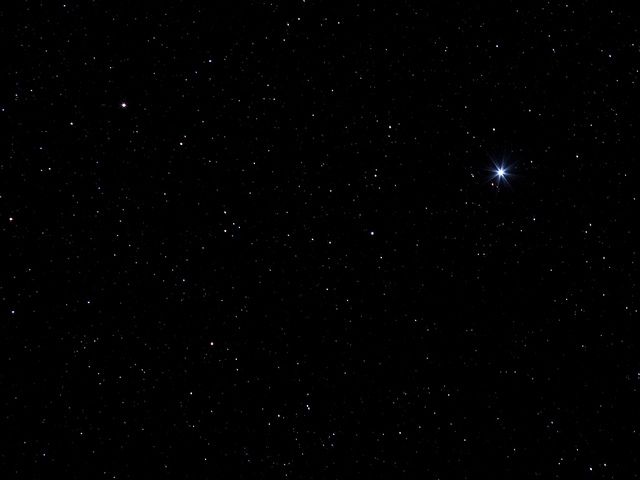With New Year’s Eve just approaching, you may find yourself staring at the heavens and wondering what 2013 portends. If you’re lucky and put yourself in just the right spot at midnight, you may be able to see the second brightest star in the sky that’s normally invisible to much of the Bay Area — Canopus.
Dale Gieringer, an amateur astronomer and, you could say, Canopus aficionado, has been tracking down sightings of the elusive Canopus since 1972. The Oakland resident has traveled all over the Bay Area in search of spots where the supergiant appears, ever so low on the horizon.
“The problem is you have to have just the right conditions — a clear night with a perfect horizon,” he said. “You can’t say you will have a Canopus party tonight and with any certainty it’s going to pan out.”
Canopus is the northernmost star of the famous stars of the Southern skies, where it shines just below the brightest of stars visible from Earth, Sirius. In theory, Canopus’ northern limit of visibility is latitude 37°18′ north, right around San Jose. The Lick Observatory on Mount Hamilton is maybe the best viewing spot, because its elevation and atmospheric refraction adds another degree to the star’s apparent altitude.
“It’s really conspicuous on a clear night,” said Gieringer, who besides astronomy works as the California coordinator of the National Organization for the Reform of Marijuana Laws.
At about 310 light years away, Canopus is actually a brighter star then Sirius, but appears fainter because of its distance. You could stretch 65 suns across Canopus, it’s that huge.

Consequently, Canopus features prominently in myths. In the legend of the Trojan War, Canopus was the pilot of the Greek ship that set sail to retrieve Helen of Troy. For any “Dune” fans out there, the fictional planet Arrakis, where the sandworms live, is the third planet from the star Canopus. In practical uses, Canopus has been popular in sea and space navigation.
Gieringer has tracked Canopus along the Pacific Coast and has seen it as far north as Half Moon Bay, but usually the fog extinguishes his search. One chilly, clear February night he looked for it out in the ocean in Pescadero and saw a thin line of fog along the horizon.
“I started to see a glow in the fog and after 15 minutes it rose above the fog line and it looked really bright and brilliant,” he said. “It looked like a flashlight beam over the ocean and it stayed above the fog for 15 minutes and then went back under the fog.”
In astrological time, it’s a great moment to be viewing Canopus, since it’s near the northernmost limit of the 26,000-year procession of the equinoxes. No big rush though — you’ll have your lifetime to spot it.
After New Year’s it will slowly appear sooner on the horizon until by March you’ll have little chance of seeing it again until the fall.


-196x300.jpg)